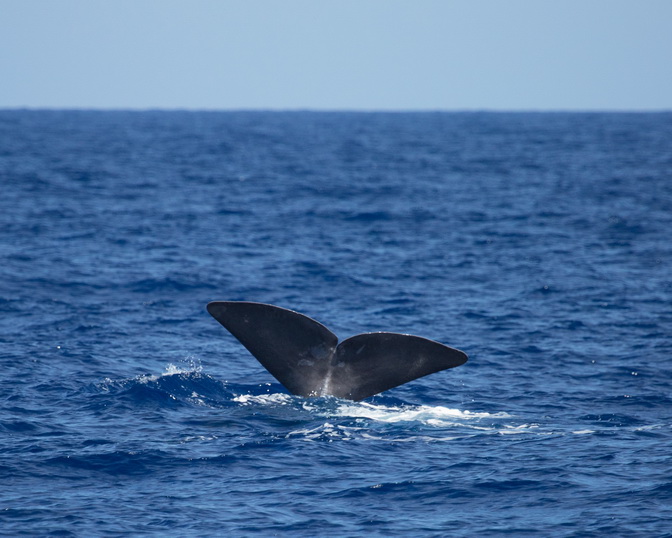Souad Lamouti, a researcher from the Algerian National Research Center for the Development of Fisheries and Aquaculture (Centre National de Recherche pour le de Développement de la Pèche et de l’Aquaculture (CNRDPA) and four of her colleagues joined the Song of the Whale team in Malaga. Souad describes their time on board….
Every researcher in marine science and nature lovers wish to meet whales and dolphins; For us the ACCOBAMS SURVEY INITIATIVE (ASI) is a great opportunity to study these animals to contribute to their knowledge, conservation and protection. It is probably the first or one of the rare surveys involving almost all Mediterranean countries at the same time for a same scientific objective. The two parts of the survey are important, both the aerial and the boat, as the aerial can cover quickly a big area and in the boat acoustics allows detecting the presence of the animals even if we can’t see them and you feel near the animals sharing a part of their world.
Passionate by marine research, having previous experiences at sea and works related with cetaceans studies, my colleagues (Rabah SELMANI, Mhamed LAID, Abdelmadjid GHERDIS, Mohammed BOUAICHA) and me did not hesitate a moment to join the adventure, all were ready and exited to go for the survey. Thanks to the efforts of the ACCOBAMS secretariat, we had the opportunity to be a part of this historical adventure representing our country (Algeria) and research center (CNRDPA).

This experience was as amazing as expected. We liked the fact that everybody in the boat was involved in the watch activities and all other duties. This survey was a great experience for all of us, meeting so kind and interesting people (Richard Mc LANAGHAN, Conor RYAN, Jonny REID, Matt JERRAM and Brian MORRISON), sharing magical moments with them. During the day times, these moments were observing dolphins (common, striped and Rissos), pilot whales, beaked whales, sea turtles, swordfish and Bluefin tuna schools. During the nights, the sky was full of stars and the sea full of bioluminescent species.
The 18th of June was « the Day » thanks to the professionalism, experience and determination of the marine research and conservation team, we saw the huge mythical animal which are sperm whales, Physeter macrocephalus Linnaeus, 1758, considered as Endangered in the IUCN red list and these whales were offshore Algiers “alive, just in front of home”.
From the early morning, Rabah was exited to hear the sperm whales clicks, while Johnny and Conor tried to localise them acoustically. Then it was the moment to swap places with my colleague LAID, who was still holding binoculars, then he shouted that he had seen something. He had spotted a whale blow, then Conor confirmed that it was two sperm whales. After a moment Richard directed the boat towards them, there was silence on deck; everybody had the eyes well opened seeking for a cue: blow or a part of body. Suddenly there was another blow, two animals then a third one and a fourth. The ultihmo magical moment was when Richard said one is fluking, and we saw the tail fluke of an individual then the same for the second individual.

Thank you again to the SOTW team and the Accobams Secretariat for these two weeks of very fruitful experience, that we would be happy to renew.
Souad LAMOUTI

Sorry, comments are closed for this post.